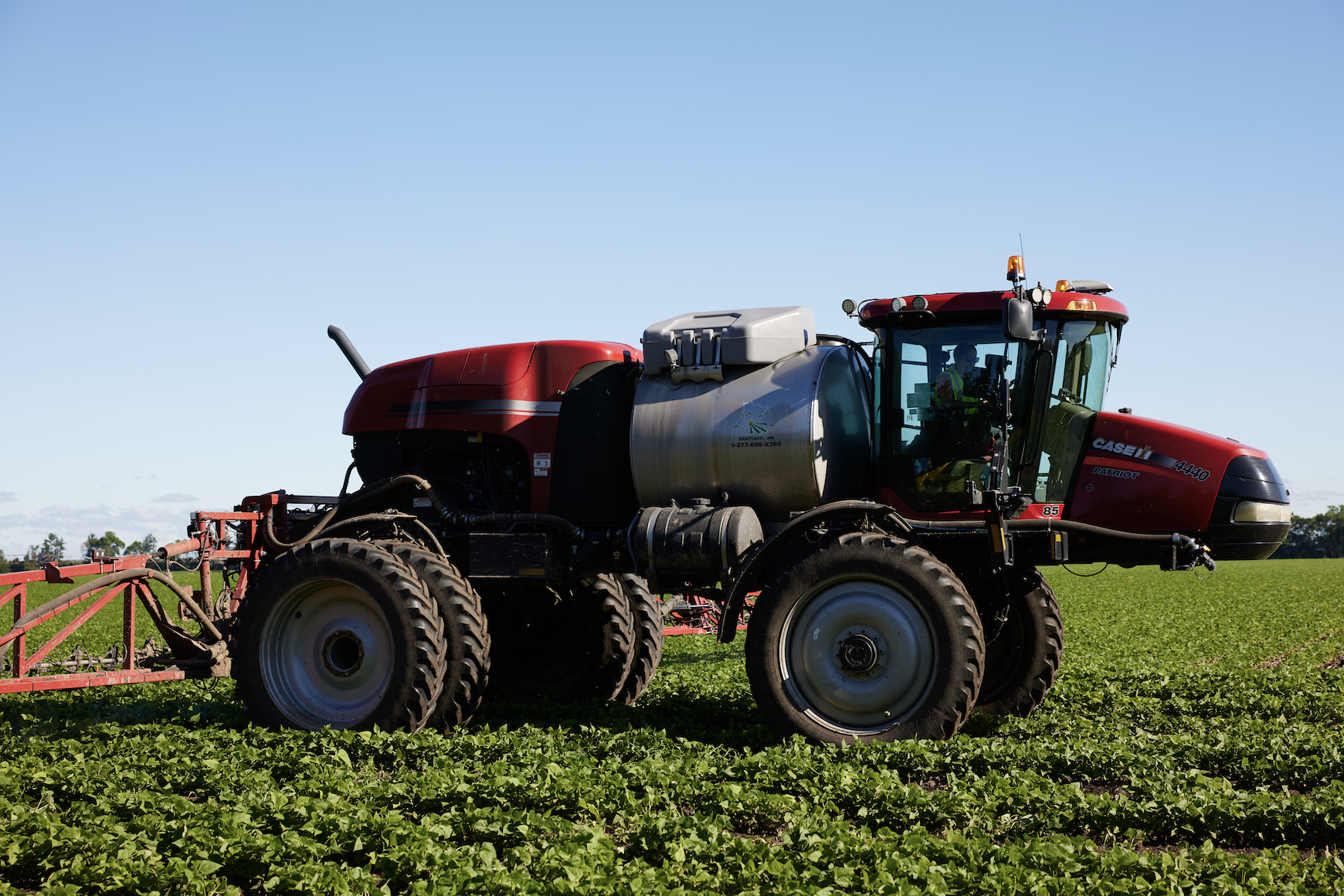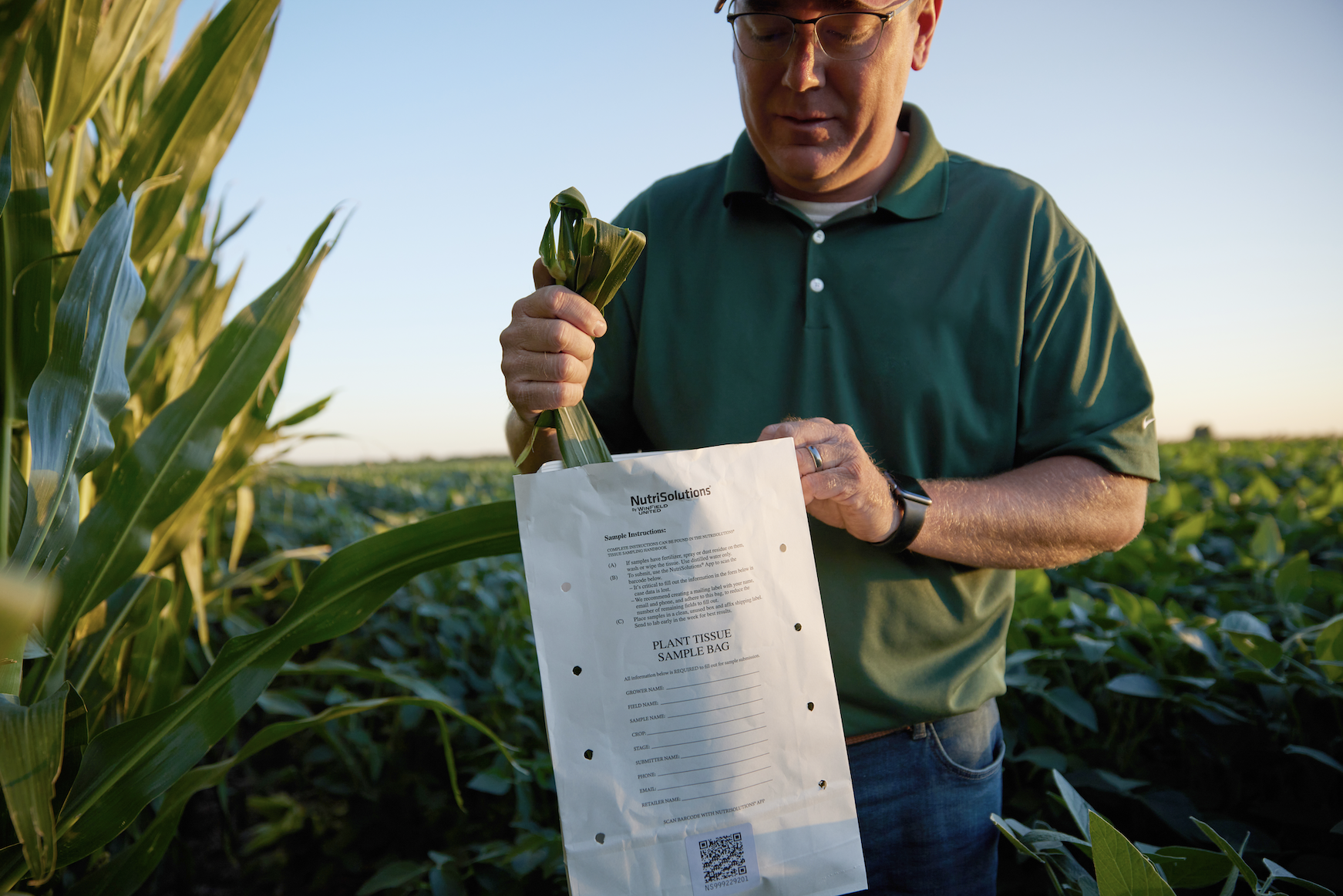Can You Spot a Micronutrient Deficiency?

Generally, it’s easy to see when stress has taken a toll on crops. But determining what’s causing unhealthy plants sometimes requires extra detective work. Micronutrient deficiencies, for example, are hard to diagnose early based on visual symptoms alone. Here are some tips to help you identify micronutrient deficiencies as you scout fields.
Review soil and tissue tests to confirm boron deficiencies in alfalfa. There are options for foliar or soil-applied supplements that can benefit crop health. MAX-IN® Boron is a foliar-applied micronutrient that contains boron to support leaf growth, efficient photosynthesis and overall plant health. In alfalfa, apply MAX-IN Boron after each cutting when sufficient regrowth has occurred.
A foliar micronutrient application, such as MAX-IN Ultra Manganese, can help increase nitrogen metabolism and carbohydrate utilization in soybeans and may also offer increased resistance to diseases. Applications should be made in late vegetative growth stages and can be repeated at R2 to R3 if needed.
Zinc is often applied with a starter fertilizer, but foliar applications are also effective. Ultra-Che® Zinc 9% EDTA is a chelated zinc micronutrient that can be added to liquid pre-plant, starter or sidedress fertilizer applications.
In-season foliar applications of MAX-IN Zinc or MAX-IN Ultra ZMB® support leaf growth and root development in corn. Both products can be applied with postemergence herbicide applications and other plant health applications when the crop is between V3 and V8 growth stages.
Even though crops need micronutrients in small amounts, they can be a limiting factor for yield potential. Work with your trusted WinField® United retailer to develop a comprehensive nutrient management plan that includes micronutrients to maximize your crop’s potential this season.
All photos are either the property of WinField United or used with permission.
© 2022 WinField United. Important: Before use always read and follow label instructions. Crop performance is dependent on several factors many of which are beyond the control of WinField United, including without limitation, soil type, pest pressures, agronomic practices and weather conditions. Growers are encouraged to consider data from multiple locations, over multiple years and to be mindful of how such agronomic conditions could impact results. Citri-Che, MAX-IN and WinField are trademarks of WinField United. All other trademarks are the property of their respective owners.
It Might Not Be Insect Damage in Alfalfa
Boron deficiency is more common in alfalfa than in any other row crop. Since boron is an immobile nutrient in plants, signs of deficiency will first appear in new growth. You’ll often see yellow-reddish leaves near the top of the plant, while older leaves remain green. Boron deficiency is sometimes misdiagnosed as leafhopper damage due to similar plant symptoms. One differentiator is that a pronounced boron deficiency can cause bunched leaves and shorter internodes, whereas leafhopper damage does not.Review soil and tissue tests to confirm boron deficiencies in alfalfa. There are options for foliar or soil-applied supplements that can benefit crop health. MAX-IN® Boron is a foliar-applied micronutrient that contains boron to support leaf growth, efficient photosynthesis and overall plant health. In alfalfa, apply MAX-IN Boron after each cutting when sufficient regrowth has occurred.
Watch For Manganese Deficiency in Soybeans
Of all the micronutrients, manganese is often the most limiting for soybeans, especially as you go east in the Corn Belt. Prominent symptoms of manganese deficiency include yellow tissue between veins on new plant leaves, followed by brown, dying tissue. Although these symptoms are not always detected, if the deficiency isn’t corrected, there could be yield loss due to a lack of green leaf area. Symptoms of manganese deficiency look similar to other nutrient deficiencies and agronomic problems, so good scouting and tissue sampling is critical for detection.A foliar micronutrient application, such as MAX-IN Ultra Manganese, can help increase nitrogen metabolism and carbohydrate utilization in soybeans and may also offer increased resistance to diseases. Applications should be made in late vegetative growth stages and can be repeated at R2 to R3 if needed.
Your Corn Might Be Missing Zinc
The micronutrient most likely lacking in your corn crop is zinc. Deficiencies can show up early in the season due to cold, wet soil conditions or later in the season if the deficiency is severe. Deficiency symptoms generally appear in the newest leaf tissue since zinc isn’t mobile in plants. To diagnose a zinc deficiency in corn, look for yellow or white streaking on the leaves, which may not be uniform across the width of the leaf.Zinc is often applied with a starter fertilizer, but foliar applications are also effective. Ultra-Che® Zinc 9% EDTA is a chelated zinc micronutrient that can be added to liquid pre-plant, starter or sidedress fertilizer applications.
In-season foliar applications of MAX-IN Zinc or MAX-IN Ultra ZMB® support leaf growth and root development in corn. Both products can be applied with postemergence herbicide applications and other plant health applications when the crop is between V3 and V8 growth stages.
Scout and Sample
Combine soil and tissue sampling as the best way to diagnose a micronutrient deficiency reliably. Nutrient deficiencies are rarely consistent across a field, so it’s essential to target plants displaying symptoms to ensure an accurate snapshot of your crop’s health. Use scouting observations and sampling data to fine-tune your in-season fertilizer strategy.Even though crops need micronutrients in small amounts, they can be a limiting factor for yield potential. Work with your trusted WinField® United retailer to develop a comprehensive nutrient management plan that includes micronutrients to maximize your crop’s potential this season.
All photos are either the property of WinField United or used with permission.
© 2022 WinField United. Important: Before use always read and follow label instructions. Crop performance is dependent on several factors many of which are beyond the control of WinField United, including without limitation, soil type, pest pressures, agronomic practices and weather conditions. Growers are encouraged to consider data from multiple locations, over multiple years and to be mindful of how such agronomic conditions could impact results. Citri-Che, MAX-IN and WinField are trademarks of WinField United. All other trademarks are the property of their respective owners.





